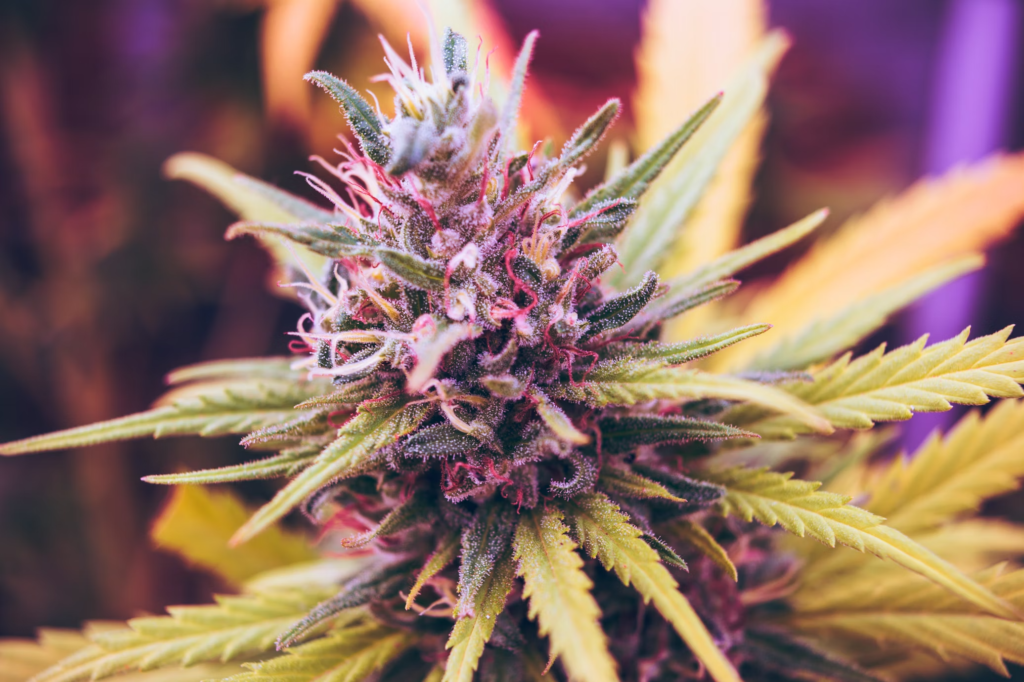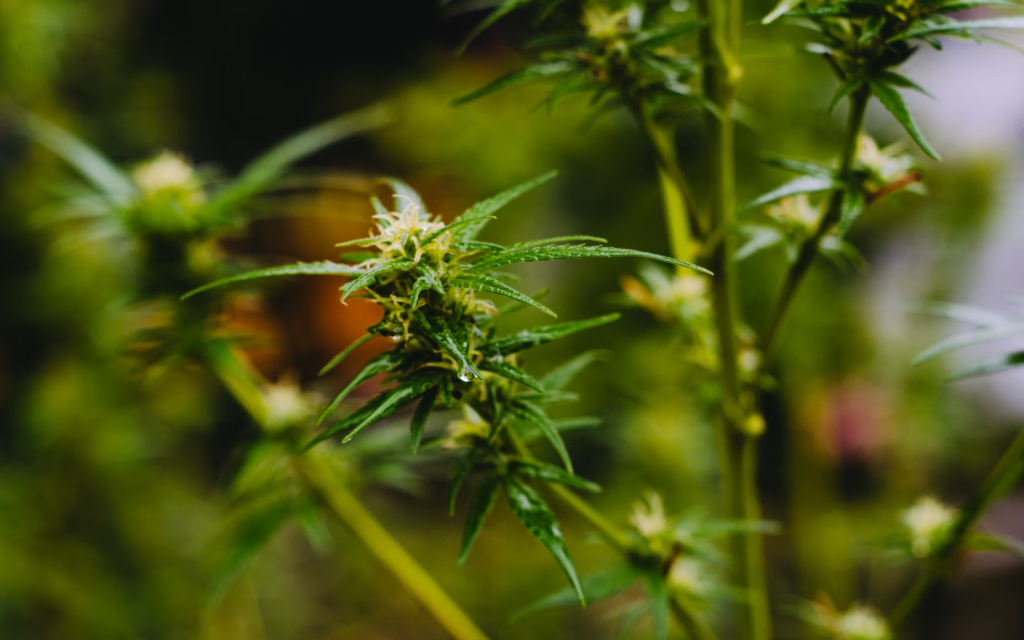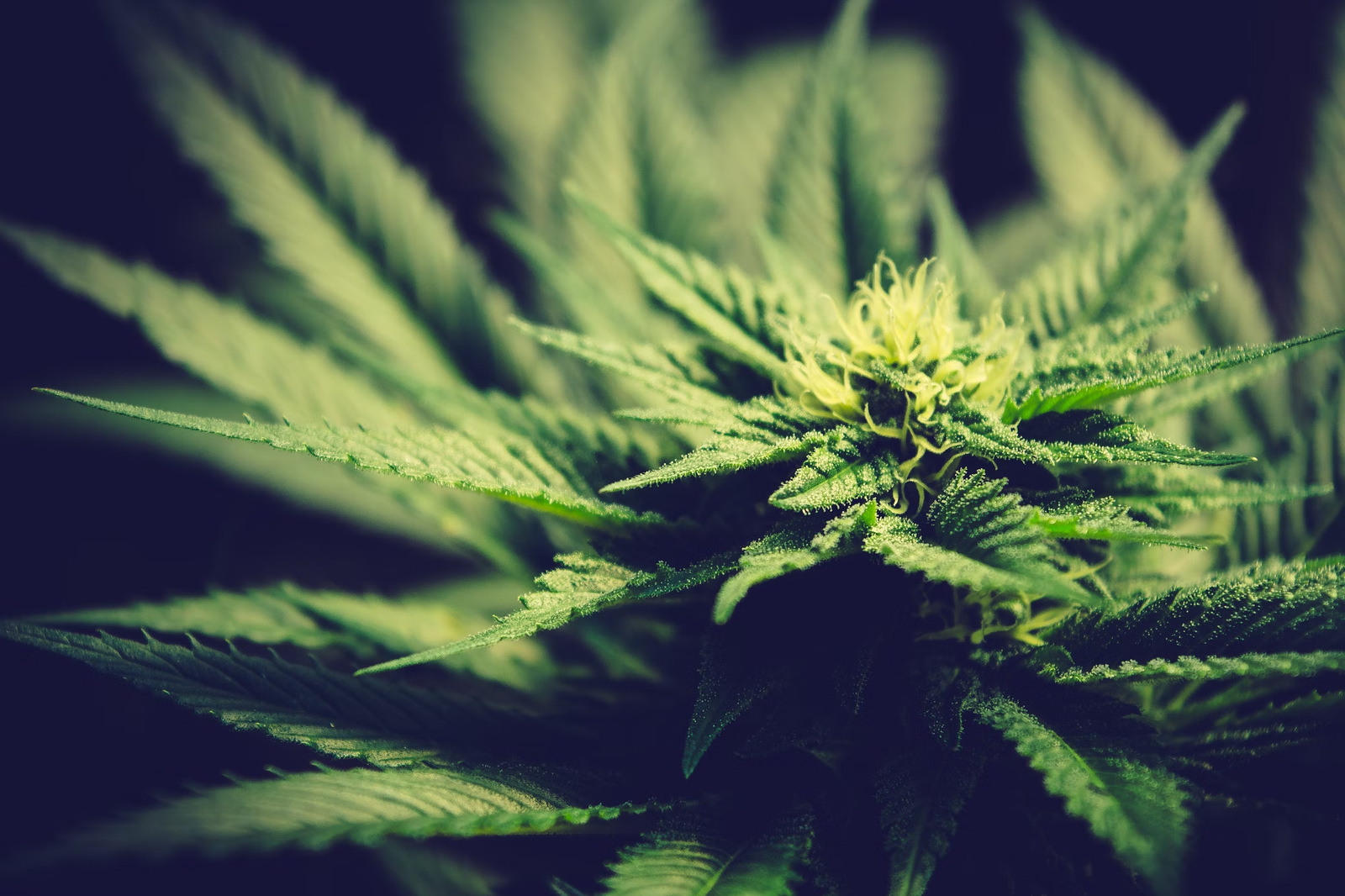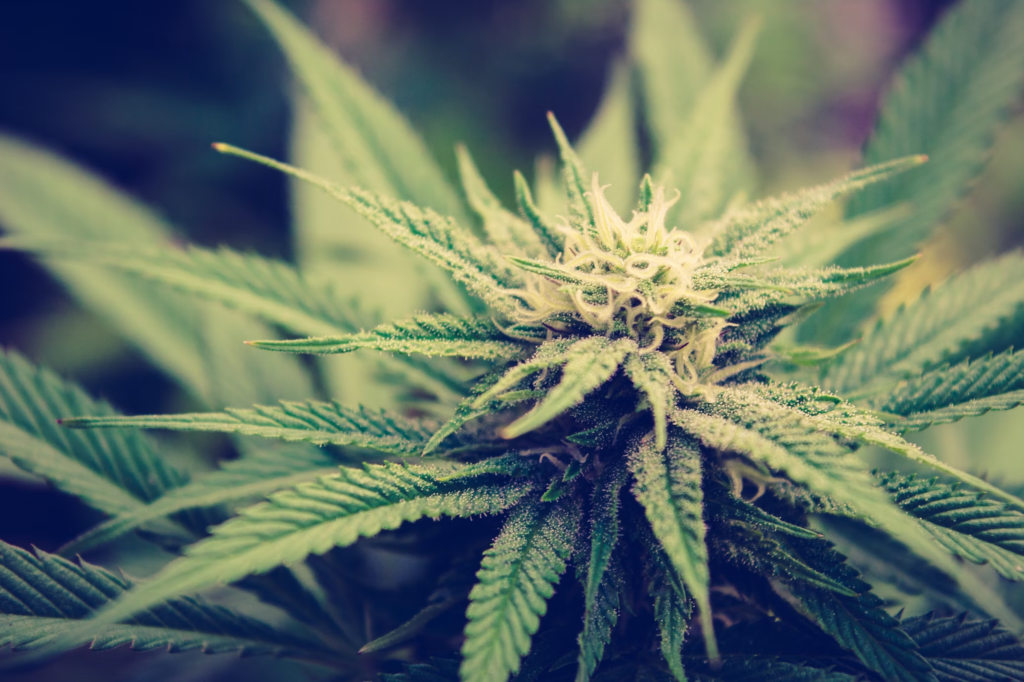The Complete Guide to Feminized Cannabis Seeds: All You Need to Know

When browsing for cannabis seeds, you might encounter various unfamiliar terms and phrases. You might come across mentions of feminized cannabis seeds, photoperiod plants, autoflowers, male and female plants, hybrids, hermaphrodites, and more. If you’re new to cultivating cannabis, it’s natural for all of this to appear perplexing.
However, there’s no need to worry! Although these concepts may initially seem overwhelming, they become clearer with proper explanations. While we aim to cover all aspects, let’s focus on understanding feminized seeds for now, taking it one step at a time.
Contents:
- What are feminized seeds?
- Sativa, indica, hybrid, and ruderalis strains
- Fast-flowering cannabis
- The importance of terpenes in cannabis
- How to grow feminized seeds
- Other essential terminology and concepts
- Top feminized cannabis strain families
- Top feminized cannabis families
- How to select the best cannabis seeds for you
- Top cannabis strains you need to try
What Are Feminized Seeds?
Until recently, when growing cannabis from seeds, there was always an equal probability (50%) of each plant being male. However, it is only the female plants that develop buds containing high levels of cannabinoids like THC and CBD.
Male plants, on the other hand, produce seed pods and, if left in the vicinity for too long, they can pollinate the female plants, significantly diminishing their yields. Consequently, individuals cultivating regular seeds had to promptly determine the sex of their plants in order to remove the males from the equation.
The introduction of feminized cannabis seeds in the 1990s brought about a revolution in cannabis cultivation. These seeds are genetically modified to produce exclusively female plants, with an incredibly high success rate of around 99.9%. This breakthrough eliminated the element of chance, making the process of growing cannabis significantly easier and more cost-effective.
Feminized seeds are typically engineered to develop into photoperiod plants. Photoperiod cannabis plants initiate their flowering stage based on the duration of daylight and darkness. In their natural environment, cannabis plants start blooming towards the end of summer when the days become shorter. When cultivating indoors, photoperiod cannabis plants are kept in the vegetative phase until the grower decides to induce flowering by reducing the hours of light exposure.
An Overview of Feminized Cannabis Seeds
• High amount of cannabinoids compared to male cannabis. Strains are often bred for maximum potency and aroma.
• Seeds are 99.9% feminized, so plants will almost always develop into females.
• No need to check sex of plants, and no need to discard male plants.
• Feminized strains are usually photoperiod strains, meaning they’re light cycle-dependent.
At Royal Queen Seeds, all feminized seeds are clearly labeled and categorized as such, ensuring that there is no confusion when making a purchase.
Who Uses Feminized Strains and Why?
The current market offers high-quality feminized seeds that predominantly yield cannabis plants with abundant THC content. As the primary psychoactive component in cannabis, THC is highly valued by various cannabis enthusiasts for the potent and enjoyable high it induces.
- Recreational cannabis users derive pleasure from the calming, relaxing, euphoric, or invigorating highs produced by feminized strains. With an extensive range of options available, users can choose strains that offer a tranquil experience for the evening or a vibrant buzz for daytime activities, depending on their preferences. Moreover, as various strains exhibit distinct combinations of cannabinoids, terpenes, and sativa/indica genetics, experimenting with different feminized strains enables users to discover their desired effects and find their perfect balance.
- Individuals who utilize cannabis for holistic purposes specifically opt for feminized strains due to their notable effects. They discover that THC elevates their mood and aids in relaxation during stressful situations, effectively alleviating various symptoms they may be experiencing. Users often find that THC promotes restful sleep and provides additional therapeutic benefits.

Sativa, Indica, Hybrid, and Ruderalis Strains
Cannabis can be classified into several distinct types or subspecies. The primary categories include sativa and indica, but it’s also important to consider hybrid and ruderalis strains.
Traditionally, it was believed that the effects of cannabis were determined by its subspecies—whether it leaned towards indica or sativa. Indicas were associated with a heavy, sedating experience, while sativas were believed to deliver an energizing high more suitable for daytime use. However, recent evidence suggests that the effects of a particular strain are influenced more by its terpene profile rather than the subspecies it belongs to.
In other words, the traditional notions of indica strains being strictly relaxing and sativa strains being exclusively uplifting are not always accurate. The effects can vary, and it is advisable to read strain descriptions to understand the specific effects before purchasing.
However, where the subspecies do exhibit more distinct disparities is in their growth patterns and physical characteristics:
• Indica strains typically have a compact and bushy growth structure with broad leaves. They are known for their resilience and can thrive in various growing conditions.
• Sativa strains have a tall and slender growth structure, characterized by thin and elongated leaves. These plants prefer abundant sunlight and tend to thrive in warmer climates. Sativas generally have a longer flowering period compared to indicas.
Nowadays, the majority of cannabis strains are not purely indica or sativa. Instead, they are hybrids that combine characteristics of both subspecies, resulting in varying growth patterns.
Another subspecies worth considering is Cannabis ruderalis, which is often overlooked. Ruderalis strains grow wild in northern regions such as Siberia and are known for their “weed-like” characteristics. What sets them apart is their natural autoflowering ability. Breeders can leverage ruderalis genetics to create autoflowering versions of traditional photoperiod strains, adding an interesting dimension to strain development.

Quick-Blooming Cannabis Varieties
In the world of cannabis cultivation, the maturation process can be a time-consuming endeavor, often spanning 60-70 days or even longer. This poses a challenge for growers in regions with short summers and unpredictable autumn weather, where prolonged exposure to rain can lead to dampness and mold formation on the buds.
To address this issue, breeders have developed fast-flowering strains. These varieties reach harvest readiness in a remarkably short period of 6-7 weeks, allowing cultivators to bring in their crops by mid to late September, minimizing the risk of rain damage.
Fast-flowering strains are typically created through the strategic crossing of a photoperiod strain with a ruderalis or autoflowering variety. It is important to note that fast-flowering strains differ from autoflowering strains, which initiate flowering based on age rather than changes in light cycles.
The Importance of Terpenes in Cannabis
As previously mentioned, emerging research indicates that the effects of cannabis are not solely attributed to cannabinoids but are likely influenced by aromatic terpenes. Further investigation is required to fully understand this relationship, but it provides a possible explanation for the varying effects observed among strains with similar THC:CBD ratios.
What is currently understood is that terpenes, such as limonene, myrcene, and pinene, contribute to the unique flavors and aromas found in cannabis strains. These compounds are responsible for the fruity, citrusy, floral, sour, or woody scents that differentiate one strain from another.

How to Grow Feminized Seeds
While it’s true that feminized seeds offer a simpler cultivation experience compared to regular seeds, it’s important not to overlook potential challenges. Just like with male photoperiod plants, growing feminized cannabis presents its own set of specific hurdles that need to be addressed.
1. Indoors Vs Outdoors
Indoor growers need to manually adjust the light/dark schedule when cultivating feminized cannabis. This adjustment is typically made when the plants have reached approximately half of the desired final height. This is necessary because plants tend to stretch during the early stages of the flowering phase and require adequate space for proper growth.
To initiate the flowering process for feminized cannabis indoors, growers switch the lights to a 12/12 schedule. This longer dark period replicates autumn conditions and signals the plants to begin flowering.
When growing feminized cannabis outdoors, it is crucial to choose the right climate and season for planting. This is because the sunlight hours vary throughout the seasons, and your plants require a specific schedule to flourish. To ensure their optimal growth, it is advisable to plant them during spring when there is no risk of frost and aim for a fall harvest.
2. How Much Time Do I Need to Grow Feminized Cannabis?
The timing for growing cannabis, whether indoors or outdoors, is strain-dependent. Certain types, like indicas, have a rapid growth rate and typically flower within 6–7 weeks. On the other hand, strains like Hazes require twice as much time to reach the flowering stage.
For those aiming to achieve a quick harvest, it’s advisable to cultivate fast-flowering varieties or feminized autoflowers. These particular strains can be ready for harvest in as little as 60 days after germination.
3. Can You Grow Different Feminized Strains in the Same Grow Room?
Growing multiple strains in a single grow room is feasible but requires a learning process.
This is due to several factors. Each strain may exhibit varying growth heights, demand different nutrient levels, and reach maturity at distinct intervals. Employing plant training methods like pruning and cropping might be necessary to ensure an even canopy under the grow light.
4. Optimal Temperature and Humidity for Growing Feminized Cannabis
For optimal growth, feminized cannabis generally thrives in moderate temperatures of around 21°C. Extreme temperature conditions can hinder growth and lead to various issues. To achieve the best results, it is recommended to cultivate in an environment where temperature control is possible, especially if you do not reside in an ideal climate. If needed, utilize heaters and/or cooling systems accordingly.
The ideal humidity level for cannabis plants varies based on their specific stage in the life cycle. Generally, seedlings and plants in the vegetative phase benefit from a higher humidity environment. However, during the flowering stage, it is advisable to reduce relative humidity to a range of 40-50% to minimize the risk of mold formation.

5. What Kind of Soil Should You Use for Feminized Seeds?
To achieve optimal growth, cannabis thrives in soil that is rich in nutrients, well-aerated, and drains effectively. Many commercially available soils are already formulated for cannabis cultivation. If you are using natural soil, you can enhance its suitability for cannabis by incorporating amendments such as perlite, coco coir, vermiculite, compost, or worm castings. These amendments will help improve the soil’s composition and provide a more favorable environment for cannabis plants.
6. What Kind of Nutrients Should You Use for Feminized Cannabis Plants?
To ensure robust growth, your feminized cannabis plant requires a range of essential nutrients. The three primary “macronutrients” it needs are nitrogen, phosphorus, and potassium. Additionally, it requires various micronutrients like calcium, iron, magnesium, copper, and others.
Commercial cannabis nutrients typically contain all the necessary macro and micronutrients. However, it’s important to follow the recommended dosages (or slightly less) when feeding your plants.
Keep in mind that cannabis has distinct nutrient requirements during its vegetative and flowering stages. As a result, cannabis fertilizers are often available in two varieties: one formulated for growth and another designed for flowering.
7. What Kind of Water Do Feminized Cannabis Plants Need?
To ensure successful growth of cannabis in soil, maintaining an ideal pH level of approximately 6-7 in your water/nutrient solution is crucial. Failure to do so can hinder nutrient absorption by your plants, regardless of their availability. Thankfully, achieving the desired pH level is easily achievable by using a few drops of pH down or up products to adjust your tap water accordingly.
8. Plant Training — What is It and Why Should You Do It?
Growers utilize plant training techniques to maintain the desired size and shape of their cannabis plants. These techniques encompass a range of methods such as topping, pruning, super-cropping, pinching, and defoliation. Ultimately, their collective purpose is to maximize growing space and enhance light exposure, leading to improved yields.
It’s important to note that plant training can induce stress in cannabis plants, potentially pausing their growth temporarily. As a result, most training methods are not recommended for feminized autoflowers due to their limited lifespan. However, feminized photoperiod cannabis does not face this constraint and can readily recover from training-induced stress.
Other Essential Terminology and Concepts
Understanding the extensive array of cannabis-related terms can be a bit overwhelming, and it’s common to confuse them. To provide clarity, we’ve concluded this piece by offering a comprehensive overview of crucial cannabis terminology and concepts.
How Cannabinoids Are Made in Cannabis
During the growth of the cannabis plant, cannabinoids like THC, CBD, and numerous others do not spontaneously manifest. In reality, their formation entails a complex internal chemical process.
One of the initial stages involves the synthesis of a compound known as geranyl pyrophosphate within the plant. This compound subsequently combines with olivetolic acid, resulting in the formation of cannabigerolic acid (CBGA).
This compound serves as the fundamental foundation for the primary cannabinoids, but the process is not yet complete. CBGA must first interact with specific enzymes and undergo biosynthesis to transform into the acidic forms of familiar cannabinoids. At this stage, we encounter THCA, CBDA, and CBCA, bringing us close to the culmination of this journey.
To convert these cannabinoid acids into THC, CBD, and CBC, respectively, only one additional step is required: decarboxylation. This term simply denotes the process of applying heat to cannabinoid acids to activate and convert them into their “active” cannabinoid forms. Naturally, this transformation occurs automatically when smoking or vaping.
How THC Affects the Endocannabinoid System
Now, let’s explore how cannabinoids function within your system.
Among the numerous cannabinoids, THC and CBD are the most widely recognized. THC is responsible for the distinct psychoactive effects associated with cannabis, commonly known as the “high.” On the other hand, CBD, while believed to offer several potential benefits, does not produce a psychoactive effect or induce a high.
Cannabinoids, including the extensive range of over 100 compounds found in cannabis, directly or indirectly interact with the human body’s endocannabinoid system. This intricate system primarily comprises cannabinoid receptors and plays a vital role in regulating various physiological functions, such as mood, sleep, immune response, and more. Both endocannabinoids produced within our bodies and cannabinoids from plants can bind to these receptors, resulting in a wide range of effects.
Anandamide, also known as the “bliss molecule,” is one of the key endocannabinoids. Functioning as a neurotransmitter, it facilitates communication between nerve cells. Through these interactions, anandamide influences sensations of pleasure, memory, cognitive processes, focus, sensory perception, time perception, and more.
Interestingly, THC possesses a chemical structure that closely resembles that of anandamide. Consequently, THC can bind to cannabinoid receptors, particularly CB1 receptors, in a similar manner. These pathways enable cannabis consumption to exert a diverse range of significant effects on us.
Why Does Cannabis Produce Terpenes?
In nature, various plants, including cannabis, produce these fragrant substances as a means of natural defense against pests and to entice pollinators. This phenomenon is further supported by cannabis exhibiting a propensity to enhance the production of potent aromatic compounds when confronted with an infestation.
What is Sinsemilla?
The term “Sinsemilla” originates from the Spanish language, translating to “without seeds.” This word emerged during a period when a significant portion of low-quality cannabis available in the illicit market contained numerous seeds. Consequently, “sinsemilla” became synonymous with top-notch quality during that era.
Fortunately, with advancements in genetics and the introduction of feminized cannabis seeds, the occurrence of seed-filled buds has significantly diminished in modern times. Presently, the majority of decent cannabis available is considered sinsemilla, causing the term to lose its original significance. However, it is worth noting that “sinsemilla” is still occasionally used to describe high-quality cannabis, so it retains some relevance in certain contexts.
What Are Hermaphrodites?
In addition to the two typical sexes of cannabis plants, there is also the possibility of a hermaphrodite plant. In such cases, the plant will display both male and female characteristics. As it matures, you will observe the development of both buds and pollen sacs. Unfortunately, this can result in low yields of low-quality cannabis filled with seeds.
Plant stress is the primary cause of hermaphroditism. Factors such as an interruption in the dark period during flowering, known as “re-vegging,” as well as other environmental stressors like pests, extreme temperatures, and fluctuations in humidity, can contribute to this phenomenon.
To prevent hermaphroditism, it is advisable to cultivate cannabis in a controlled environment. By minimizing plant stress, you can significantly reduce the chances of encountering hermaphroditic traits.
What Are Landraces?
Landraces refer to cannabis varieties that have evolved and adapted to their natural environments. These strains are often regarded as pure and original expressions of cannabis. Several landraces trace their origins back to the Hindu Kush region of Afghanistan and Pakistan, while others can be found across diverse locations such as Africa, Jamaica, Asia, South America, and Russia.
Top Feminized Cannabis Strain Families
There exists a multitude of feminized hybrids in existence, originating from a limited number of primary lineages. Much like human families, each lineage carries a distinctive set of traits that serve as indicators of their origin.
🍁 Kush
Cannabis strains infused with Kush genetics boast potent and pungent aromas, often accompanied by a profoundly tranquilizing couch-lock effect due to their predominantly indica nature. Additionally, these strains may exhibit terpenes that emanate earthy, woody, pine, and citrus fragrances, varying depending on the specific strain.
🌫️ Haze
Haze strains cater to the preferences of sativa enthusiasts who relish an invigorating cerebral high and enjoy indulging during daytime activities. These strains exhibit diverse terpene profiles that encompass a wide range of flavors, ranging from sweet and citrusy to notes reminiscent of coffee and chocolate.
🔮 Afghan
Cannabis strains infused with Afghan genetics typically offer a delightful combination of spicy, earthy, and fresh flavors. With a predominantly indica-leaning nature, these strains provide a soothing and euphoric couch-locking high, making them an ideal choice for nighttime relaxation and enjoyment.
🍦 Gelato
Gelato strains, exemplifying the finest California cannabis, often emit a delightful scent reminiscent of fruity desserts. The majority of these strains are hybrids, or at the very least, provide a hybrid-like experience, delivering a euphoric cerebral high accompanied by a soothing sensation.
🍪 Cookies
The Cookies strains combine a euphoric and sociable impact with a hint of physical relaxation. Anticipate a delightful fusion of earthy and sweet aromas, infused with signature cookie flavors that blend harmoniously, creating an irresistible and tantalizing combination.
🍇 Blueberry
Strains derived from the Blueberry lineage frequently showcase a terpene profile that imparts a luscious, sweet, and fruity essence reminiscent of berries. Originating from the US West Coast, Blueberry strains are widely recognized for their profound ability to induce relaxation and provide a comforting experience.
💜 Purple
Purple genetics in cannabis strains exhibit vibrant reddish/purple hues, intensifying further when exposed to cooler nighttime temperatures in the late flowering stage. These strains boast a terpene profile that blends dank hash fragrances with earthy undertones, lemony notes, and hints of pine. Since the majority of purple strains are indicas, their impact tends to induce a narcotic and tranquilizing sensation.
🍌 Banana
Renowned for its robust terpene profile exuding delightful sweet banana scents and flavors, the classic Banana strain remains predominantly indica (70%). Boasting remarkable potency with a THC content of 25%, it imparts a profoundly soothing and calming experience. Fortunately, its progeny proudly inherit these coveted characteristics.
🦨 Skunk
The distinct “skunky” fragrance of Skunk has endeared it to numerous cannabis enthusiasts. Moreover, it serves as the cornerstone for an extensive array of contemporary strains available today. Varieties featuring Skunk genetics are generally associated with a tranquilizing effect complemented by a joyful and uplifting undertone.
🧀 Cheese
The renowned Cheese, an indica-dominant hybrid created by crossing the aforementioned Skunk and Afghan strains, is widely celebrated for its potent aroma reminiscent of ripe cheese. Strains derived from Cheese genetics exude the characteristic cheesy scent while delivering a harmonious experience that blends euphoric highs with relaxing and tranquil effects.






